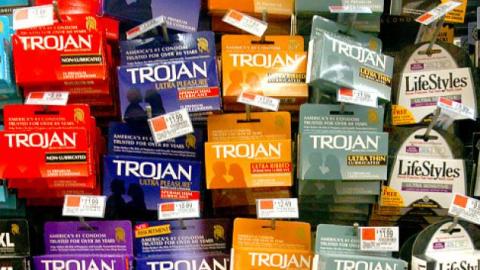By the time boys are 14 or 15 years old, many have been exposed to “myths and misperceptions” about condoms, mainly that condoms wreck pleasure, says Debby Herbenick, a sex researcher at Indiana University’s Center for Sexual Health Promotion.
 So it’s no wonder that at 16, 17, 18, when they have begin having sex, young men might resist using them, increasing their risk of contracting a sexually transmitted disease, or passing one to a partner, not to mention conceiving a baby. And they likely carry those anti-condom attitudes with them as they age.
So it’s no wonder that at 16, 17, 18, when they have begin having sex, young men might resist using them, increasing their risk of contracting a sexually transmitted disease, or passing one to a partner, not to mention conceiving a baby. And they likely carry those anti-condom attitudes with them as they age.
But new research by Herbenick and others suggests that, in real life, fears of an erotic pleasure deficit are misplaced.
Using data gathered in 2009 for the National Survey of Sexual Health and Behavior — a large, representative sampling of the United States conducted by a team of researchers that included Herbenick — she and her colleagues teased out information from 1,645 men and women ages 18 to 59 whose most recent sexual event included intercourse.
Of those, nearly 28 percent of men and about 22 percent of women said they’d used condoms. That’s higher than 2008 statistics from the Centers for Disease Control and Prevention, which showed about 10 percent of women used condoms as opposed to other birth-control methods or no contraception at all.
But the fascinating finding was that the reports of sexual arousal, ease of erection, overall pleasure and orgasm weren’t much different in those folks than in people who went bareback.
In other words, people liked sex just fine with or without condoms.
The study, published in the latest issue of the Journal of Sexual Medicine, was, like the larger national survey itself, funded by Church & Dwight Co. Inc., the company that makes Trojan brand condoms.
But Herbenick insisted that “the data is the data” and that the company did not influence the research in any way. “We are free to publish anything we want,” she said.
The study did find some slight differences in style, if not substance.
For example, men who didn’t use condoms or lubricant had significantly higher arousal ratings than men who used  condoms without lubricant, Herbenick said.
condoms without lubricant, Herbenick said.
But the group that used no condom and no lubricant had about the same arousal level as men who used a condom with a lubricant and men who used a lubricant without a condom. Got that?
The confusion illustrates a need for better communication about sexual preferences, in part to make safe sex more desirable.
“People aren’t really having any conversations about types of products related to sexual experiences and that’s a shame,” she said.
For instance, she said — and the data showed — that most people who use a lubricant apply it to the outside of the condom. But adding a small amount at the inside tip can enhance the experience for the man. More enjoyment, she suggested, could mean that men will be happier to use them, increasing safety.
Herbenick conceded that the population most likely to use condoms — the young and the single, for instance — may also be most likely to think any sex is good sex, condom or not. However, she said she didn’t think it confounded her findings that sex is just as good with a condom as without.
“Yes, for many young people, they’re just excited to have it, but it feels good for most people most of the time,” she said. “We see that in measurement studies of good sex feeling that are controlled for age. Sex feels pretty good, or we wouldn’t keep on having it.”
By Brian Alexander, NBC News

